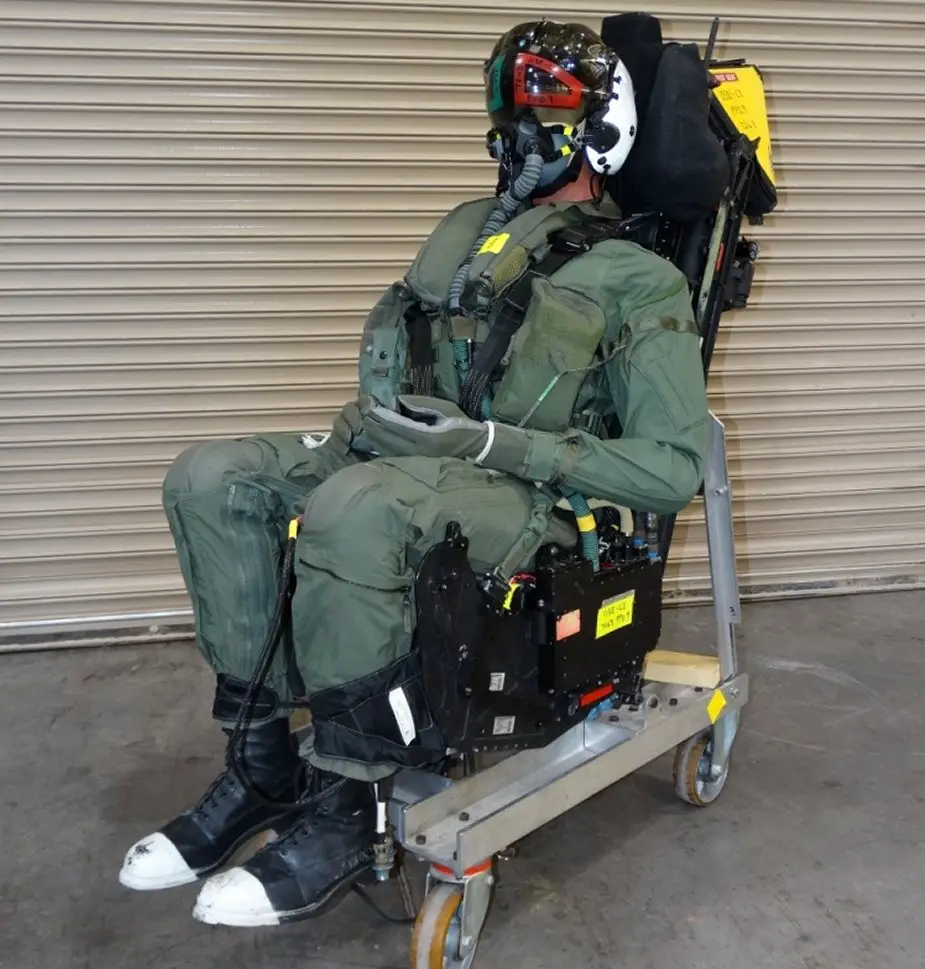Breaking news
Second vendor F-35 canopy testing completed by HHSTT team.
On Friday, 27 March, testers from the Holloman High-Speed Test Track, in conjunction with members of the F-35 Lightning II Joint Program Office, Lockheed Martin, Martin Baker, and BAE Systems, successfully conducted an F-35 static ejection seat test to evaluate pilot survivability using a canopy transparency from a new manufacturer.
Follow Air Recognition on Google News at this link
 A manikin is integrated with the ejection seat for an F-35 canopy test on March 26, 2020, at Holloman Air Force Base, N.M. (Picture source: U.S. Air Force/Lt. Col. Gregory Barber)
A manikin is integrated with the ejection seat for an F-35 canopy test on March 26, 2020, at Holloman Air Force Base, N.M. (Picture source: U.S. Air Force/Lt. Col. Gregory Barber)
The purpose of this test was to demonstrate that the ejection seat is able to penetrate through the canopy without severely injuring the pilot if there is ever a failure with the Transparency Removal System (TRS); TRS is a charge designed to fracture the cockpit canopy acrylic prior to ejection.
The test environment simulated worst-case conditions for ejection, which is standardized at 0 knots airspeed; a 200 degrees Fahrenheit canopy, which represents worst-case solar heating on a hot day, limiting fracture characteristics of the canopy transparency; and failure of the TRS to activate.
To accomplish this test, the setup included a thermal conditioning box around the forebody of the aircraft to heat the canopy to the required condition. It also included a large soft-capture net placed behind the forebody, to allow for recovery and re-use of the manikin and seat. The test setup did not include the full explosive and rocket motor complement of F-35 ejection seat components, as it was only meant to evaluate the fracture characteristics of the canopy, and not the fly-out conditions of the seat and manikin. For this test, the seat and manikin successfully penetrated through the canopy transparency and landed in the net.
“This is a critical milestone for the F-35 Enterprise, as we execute the final ejection seat test in the qualification of a second source for our canopies,” stated Lt. Gen. Eric Fick, F-35 Joint Program Executive Officer, who emphasized the importance of this combined-effort test. “We’re working closely with the Air Force Test Center (AFTC), to ensure the most critical events get done.”
This test was the final evaluation in an eight-test series at the HHSTT, meant to qualify a second vendor for F-35 canopy transparency production. The qualification of the second source of supply is the single most important aspect of the F-35 enterprise’s plan to ensure there are sufficient canopies available to the demands of the more than 500-aircraft global F-35 fleet, according to Fick.
The HHSTT, operated by the 846th Test Squadron, is the world's premier rocket sled test track. The mission of the 846TS, which is part of the 704th Test Group, Arnold Engineering Development Complex, AFTC, is to plan and execute world-class rocket sled tests enabling critical weapon system development in support of the warfighter using world-class people, technical excellence, cost-effectiveness and agility.
The Air Force Test Center, headquartered at Edwards Air Force Base, California, leads the Air Force in developmental test and evaluation of air, space and cyberspace systems to deliver war-winning capabilities. AFTC has oversight of work carried out at three primary wings across Air Force Materiel Command. Organizations include 96th Test Wing, Eglin Air Force Base, Florida; 412th Test Wing, Edwards AFB, Calif.; and AEDC, Arnold Air Force Base, Tennessee.


























